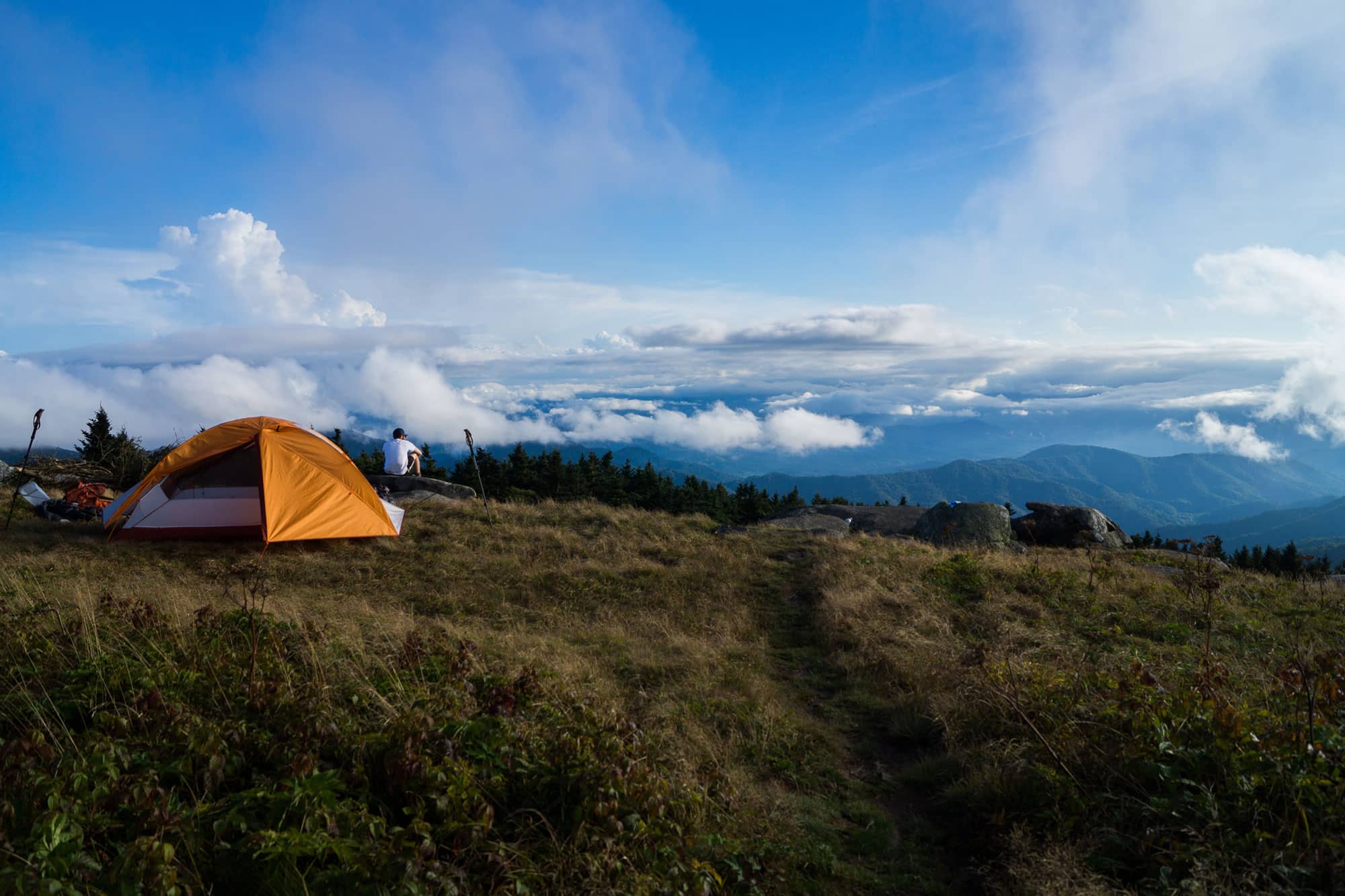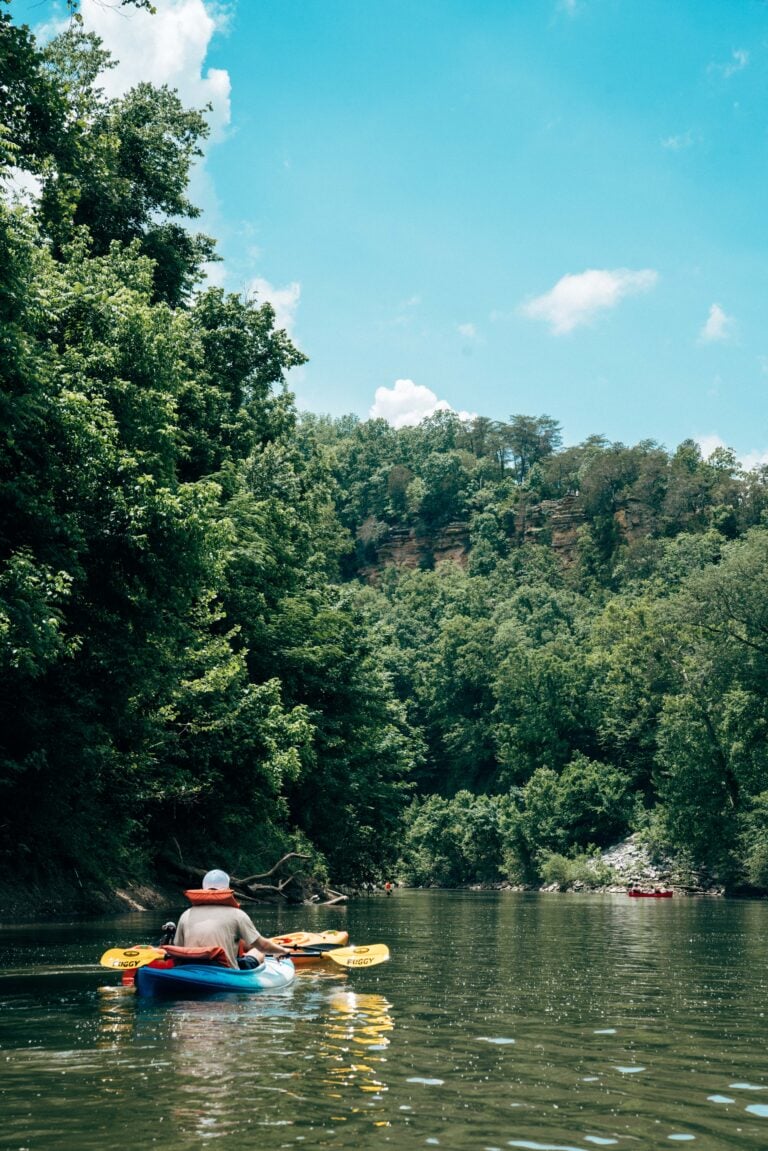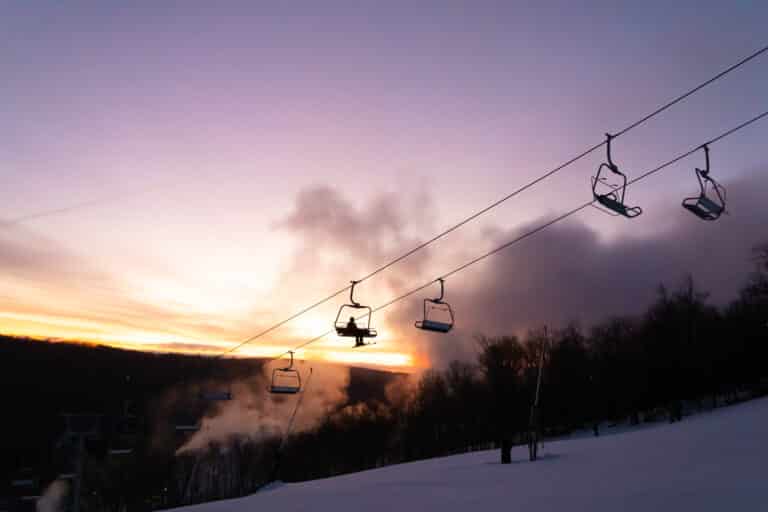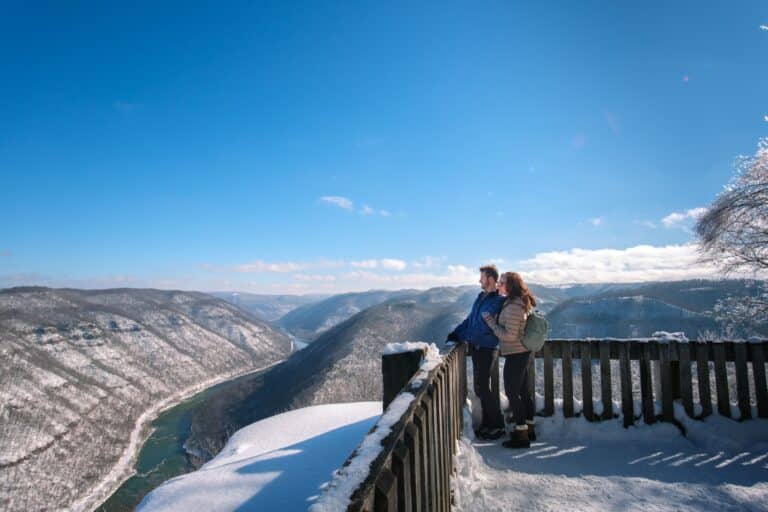Based on three decades of covering the outdoors in the Blue Ridge, we’ve made a list of must-do essentials for every regional adventurer.
This year, Blue Ridge Outdoors is celebrating 30 trips around the sun. From our humble beginnings as a small insert in a Charlottesville alt-weekly, we’ve grown into the leading free outdoor lifestyle magazine in the Southeast and Mid-Atlantic.
As we reflect on nearly three decades of adventure, we’re excited to honor the people, places, and sports that have shaped our journey. To celebrate, we’re sharing 30 must-try adventures that truly define what it means to explore the outdoors in the Blue Ridge.

1. Paddle the New River
Scientists can’t agree on the exact age of West Virginia’s New River. Some estimate the waterway took shape about 65 million years ago. Others argue it’s been raging for upwards of 375 million years. Either way, paddling this antediluvian torrent is a must-do if you ever find yourself in the Mountain State. For a chill day on the water, stick to the upper (southern) portion. For a splashier experience with Class III to Class V rapids, massive boulders, and crazy crosscurrents, check out the Lower Gorge.
2. Take a Selfie on McAfee Knob
This scenic granite outcropping in Virginia is the most photographed spot on the Appalachian Trail (A.T.). And it’s easy to see why. With 270-degree views of the Catawba and Roanoke valleys, North Mountain, and Tinker Cliffs, this ledge on the summit of Catawba Mountain is an eye-catching backdrop for your Instagram selfie.

3. Dip in the Devil’s Bathtub
While meemaw may not approve of you splishing and splashing in the Devil’s Bathtub, we sure do. Secluded in the backwoods of Scott County, Va., this small swimming hole is a crowd favorite. To access it, you can take one of two routes, the shortest being about four miles. Once you arrive, we recommend ripping off the Band-Aid and diving deep into the emerald-green water—which, according to the county’s tourism department, is the “only water cold enough to squelch the fires of hell.”

4. Swim at Sliding Rock
Come summertime, you’d be hard-pressed to find a more popular swimming spot in Pisgah National Forest than Sliding Rock. Accessible via Highway 276 in Brevard, N.C., this 60-foot granite chute sends intrepid adventurers careening into an eight-foot-deep pool of icy mountain water. With lifeguards on duty seven days a week from Memorial Day to Labor Day, it’s the perfect spot to cool off after hiking Looking Glass Rock Trail or shredding Farlow Gap.

5. Chase Waterfalls in DuPont
Contrary to the Grammy Award-winning advice TLC dropped in 1994, we strongly suggest you chase waterfalls while visiting North Carolina’s DuPont State Recreational Forest. Situated in Transylvania County (aka the Land of Waterfalls), this 12,500-acre playground is chock full of camera-ready cascades. The largest among them is the 120-foot-tall High Falls. But even shorties like the 20-foot Wintergreen Falls deserve a gander.

6. Boulder in Boone
Boone rocks—quite literally. Nestled in the High Country of North Carolina, this outdoorsy college town is big in the bouldering scene. According to the Carolina Climbers Coalition, a group that works to protect climbing areas in North and South Carolina, one of the best places to push your limits is Buckeye Knob. Here, you’ll find a smorgasbord of bouldering problems ranging from V0 to V13. There are a few highball lines, too.
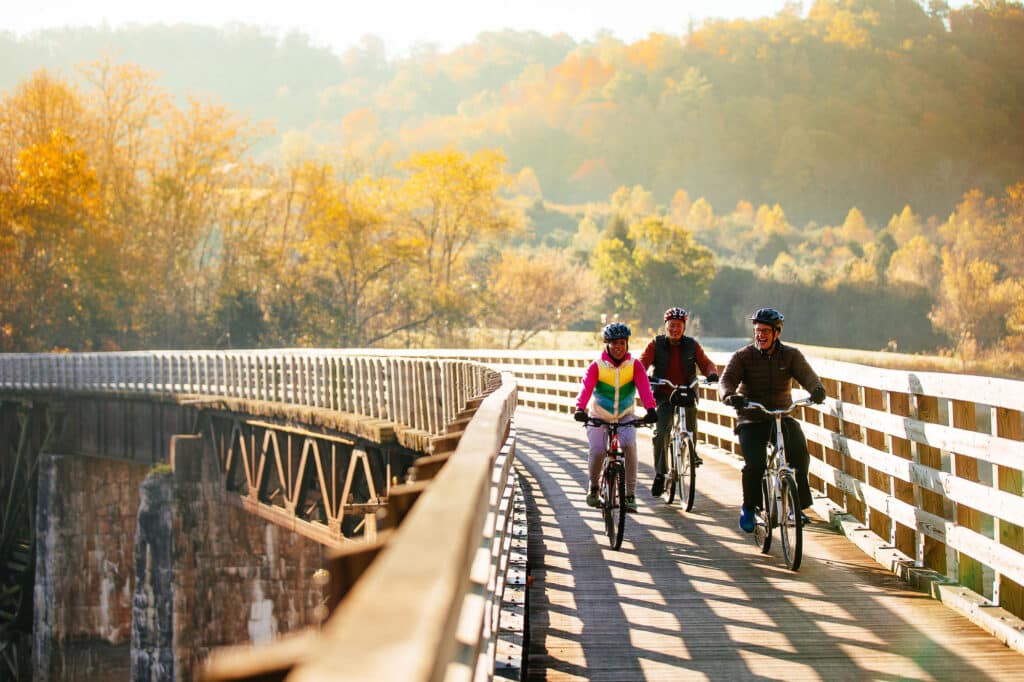
7. Cycle the Virginia Creeper
Sure, Virginia is for lovers. But it’s also for cyclists. That much is evidenced by the popularity of the Virginia Creeper Trail. Running 33.4 miles from Abingdon to Whitetop Station, this rail trail sees more than 200,000 visitors each year, many of whom come on two wheels. Don’t have a rig of your own? There are plenty of local businesses that provide bike rental and shuttle services. (Note: Because of damage caused by Hurricane Helene, certain sections of the trail are temporarily closed.)
8. Summit Old Rag
Few hiking trails come with as many red flags as Old Rag Mountain in Virginia’s Shenandoah National Park. “Know your limits,” the National Park Service’s website cautions. “… pack as lightly as possible. Be sure to carry microspikes …” While these warnings may seem daunting, the payoff is huge. After slogging up about 2,300 feet of elevation gain and a challenging rock scramble, you’ll be rewarded with 360-degree views and major bragging rights.
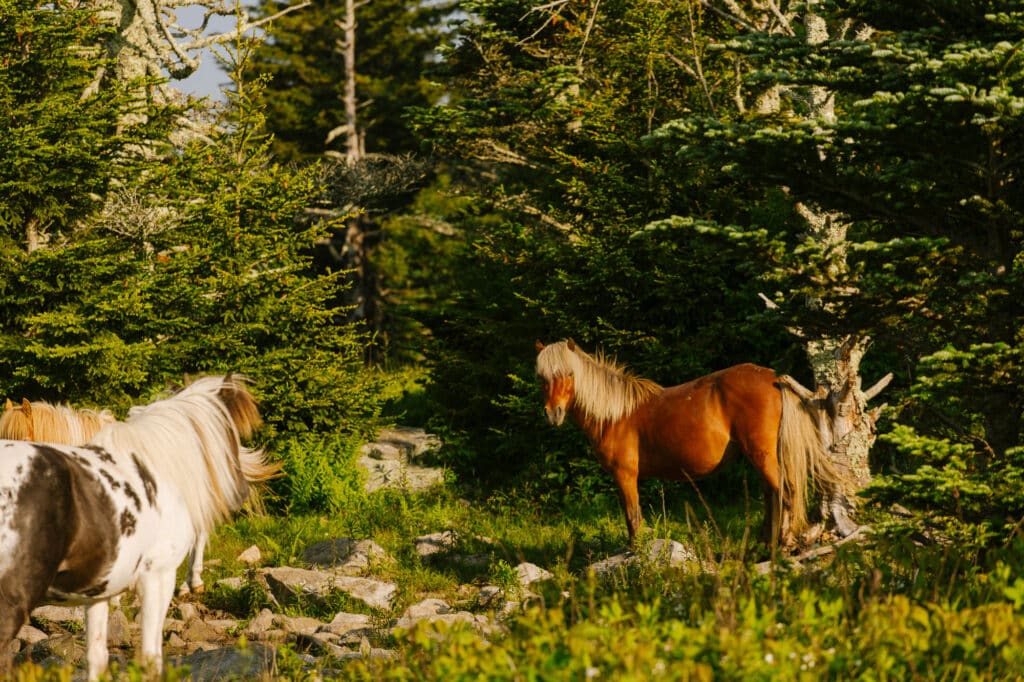
9. Hike with Wild Ponies at Grayson Highlands
Spoiler alert: Unicorns aren’t real. However, there are herds of majestic equines roaming wild in Virginia’s Grayson Highlands State Park. As the story goes, these feral ponies were introduced to the area in the 1950s by a local farmer named Bill Pugh. When the park opened in 1965, rangers let the pocket-sized steeds stick around to help maintain the meadow-like balds, which support some three dozen species of songbirds. Today, the ponies are an iconic part of the Grayson Highlands hiking experience.
10. Shred Singletrack at Tsali
If you’re hungry for hard-packed singletrack, there’s no better place to pedal than Tsali. Located in the far western reaches of North Carolina, this 120,000-acre recreation area serves up 40-plus miles of nationally renowned mountain biking trails. If you’re a gusty beginner, stick to Thompson Loop for miles of fast, flowy fun with jaw-dropping views of Fontana Lake. If you’re craving a bit more gnar, give Mouse Branch Loop a ride.

11. Cross-Country Ski at White Grass
Founded by Chip Chase in 1979, White Grass Ski Touring Center is one of the country’s oldest dedicated cross-country ski areas. It’s one of the most beloved, too. Year after year, skiers return to this West Virginia destination for an authentic experience that’s about one thing and one thing only: Making memories in the snow. Should you pay this cold-weather wonderland a visit, give yourself plenty of time to explore the meticulously groomed trails.

12. Raft the Chattooga
There are a few things every Southerner must do before they leave this earthly realm, and rafting the Chattooga River is one of ‘em. Designated as a Wild and Scenic River in 1974, this free-flowing stream originates high in the mountains of western North Carolina before snaking its way to Georgia. For folks bred below the Mason-Dixon, rafting this river’s most petulant rapid—a Class IV named Bull Sluice—is a rite of passage akin to taking a swig of pawpaw’s white lightning.

13. Go Deep at Mammoth Cave
Spelunking. Potholing. Caving. Whatever you call the sport, Mammoth Cave provides plenty of opportunities to do it. As the world’s longest-known cave system, this Kentucky marvel is home to more than 425 miles of explored passageways. Guided cave expeditions range from the Violet City Lantern Tour, an experience illuminated exclusively by lantern light, to the Wild Cave Tour, an extremely difficult, six-hour adventure that requires squeezing through tight passageways.

14. Camp on Roan Mountain
There’s no experience quite like camping on Roan Mountain in the summertime. Nestled along the North Carolina-Tennessee state line, this 6,277-foot grassy bald comes alive with Catawba rhododendron blooms in mid-June, making it a stunning place to pitch a tent. To enjoy these showy beauties, hike the A.T. from Carver’s Gap and grab a dispersed camping site.

15. Backpack Dolly Sods
Tucked in West Virginia’s Monongahela National Forest, Dolly Sods Wilderness feels like a little slice of the Canadian north, what with its wind-sculpted rocks, heath barrens, and ancient sphagnum bogs. For a weekend in the wild, hit the Bear Rocks and Lions Head Loop, a 20-mile route that gives you a little taste of everything ol’ Dolly has to offer. Just make sure to bring a map. With limited trail markings, it’s easy to get turned around in the Sods.
16. Make a Team for the Blue Ridge Relay
Misery loves company. The Blue Ridge Relay is evidence of that. During this long-standing competition, teams of runners rotate as they cover a 208-mile course stretching from Grayson Highlands State Park in Virginia to Highland Brewing Company in Asheville, N.C. Along the way, participants laugh, cry, sweat, and find out which of their friends are really good at running up steep hills at 2 a.m. It’s loads of Type 2 fun.

17. Dance at a Blue Ridge Festival
If you like the sound of music in the mountains, the Blue Ridge has you covered. When the weather warms up, the region has a variety of fun festivals full of acts showcasing the best in independent roots music from the South and beyond. If you like bigger fests, nationally known institutions like Merlefest and FloydFest are musts, and for more intimate experiences, make sure to check out Rooster Walk Music Festival near Martinsville, Va., or Red Wing Roots Music Festival in the Shenandoah Valley.
18. Party with Thru-Hikers at Trail Days
On any given day, the population of sleepy-eyed Damascus, Va., is just shy of 800. But every year in mid-May, that figure swells to 25,000 during the Appalachian Trail Days Festival. With roots reaching back into the 1980s, this annual shindig is an ode to the 2,190-mile footpath and the people who hike it. Activities include gear raffles, live music, talent shows, contra dancing, and the much-anticipated hiker parade.

19. Climb Red River Gorge (followed by pizza at Miguel’s)
Most associate Kentucky with bluegrass. But for climbers, this state is all about the Red (aka the Red River Gorge). Located in Daniel Boone National Forest, this stunning canyon system boasts more than 4,000 climbing routes ranging in difficulty from easy-peasy to pumpy and technical. After scaling the sandstone, refuel with a slice (or five) at Miguel’s Pizza—the ultimate hangout for rock jocks and locals alike.
20. SUP at Summersville Lake
Can’t afford a plane ticket to the Caribbean? Check out Summersville Lake in West Virginia instead. Known as the Little Bahamas of the East, Summersville is one of the clearest freshwater lakes on this side of the Mississippi. If you want to get wet and wild, rent a stand-up paddleboard (or bring your own) and spend a day exploring the 2,760-acre reservoir. Expect to see stunning rock formations, hidden coves, and plenty of wildlife as you glide across this picturesque lake.
21. Run Shut-In Ridge
If you’re looking to scratch that masochistic itch, no trail run does it better than Shut-In Ridge in Asheville, N.C. Constructed in the 1890s so that socialite George Vanderbilt could access his Buck Spring Hunting Lodge, this rugged footpath covers more than 17 miles and nearly 3,000 feet of elevation gain. The route is so epic that it inspired the annual Shut-In Race, one of the oldest continuously running races in the region.

22. Ascend Looking Glass
Sometimes, plans change for the better. Take Looking Glass Rock in Pisgah National Forest, for example. Eons ago, this show-stopping summit was a big ball of bubbling magma destined for the life of a villainous volcano. But it went to therapy, cooled down, and became the pluton monolith we all know and love today. Next time you’re rambling around western North Carolina, hike up to its 4,000-foot peak for epic, 360-degree views.

23. Gaze at Old Growth in Joyce Kilmer
If you like big trees and cannot lie, pay North Carolina’s Joyce Kilmer Memorial Forest a visit. Dedicated in 1936, this 3,800-acre tract of virgin forest is like a museum, except instead of dinosaur bones and ancient artifacts, you’ll find centuries-old trees. According to the U.S. Forest Service, more than 100 species of trees grow here, including massive sycamores, basswoods, and oaks. Some of the largest among them are tulip poplars that measure more than 20 feet in circumference and over 100 feet tall.

24. Thru-Hike the Art Loeb Trail
The Art Loeb Trail is one of North Carolina’s most popular footpaths, but it’s by no means the easiest. This 30.1-mile route winds through Pisgah National Forest, traversing four 6,000-foot peaks. All in all, you will climb about 7,300 feet if you’re trekking north to south (from Camp Daniel Boone Boy Scout Camp to Davidson River Campground) and 8,000 feet if you’re trekking south to north.

25. Ski Cupp Run at Snowshoe
Cupp Run at Snowshoe Mountain Resort in West Virginia is a legendary black diamond that dishes up 1,500 feet of vertical drop for an adrenaline-inducing run sure to leave your knees shaking. If you want to prove your mettle, participate in the annual Cupp Run Challenge. Held each February, this competition invites powder hounds to test their skills on some of the steepest, most challenging terrain on the East Coast.

26. Cruise the Parkway
Looking for awe-inspiring views but don’t want to huff and puff up a steep trail? The Blue Ridge Parkway’s got you covered. Known as “America’s Favorite Drive,” this 469-mile stretch of pavement offers breathtaking panoramas of the Appalachian Highlands. And you don’t even have to break a sweat to enjoy the beauty. Just pack a picnic, gas up the Oldsmobile, and get ready to cruise.
27. Hike the A.T. through the Smokies
Don’t have enough PTO to thru-hike the entire A.T.? Block off about seven days and tackle the 76-mile stretch through Great Smoky Mountains National Park instead. Running along the North Carolina-Tennessee state line, this section packs a punch with 17,200 feet of elevation gain. Along the way, you’ll reach the park’s highest point, Clingmans Dome, and ascend iconic peaks like Rocky Top and Charlies Bunion.
28. Perform an Act of Trail Magic
A little kindness goes a long way, especially when you’re walking a long way. Such is the premise of trail magic—a phenomenon the Appalachian Trail Conservancy defines as “direct kindness and generosity to hikers.” This means different things to different people. Some trail angels hand out icy sodas to weary wanderers. Others give goat-legged hikers rides into town. Whatever trail magic looks like to you, remember to follow Leave No Trace principles. (That means no unattended coolers full of snacks for Yogi Bear to snatch.)
29. Ride the Shenandoah 100
Labor Day is traditionally for sipping beer and grilling meat, but the Shenandoah Mountain 100 flips that script. Held every Labor Day weekend in Virginia’s George Washington National Forest, this grueling 100-mile mountain bike race tests endurance with about 14,000 feet of elevation gain across rugged singletracks, double tracks, and fire roads. Since 1998, it’s been the ultimate challenge in the National Ultra Endurance Series, with limited spots to keep it exclusive.
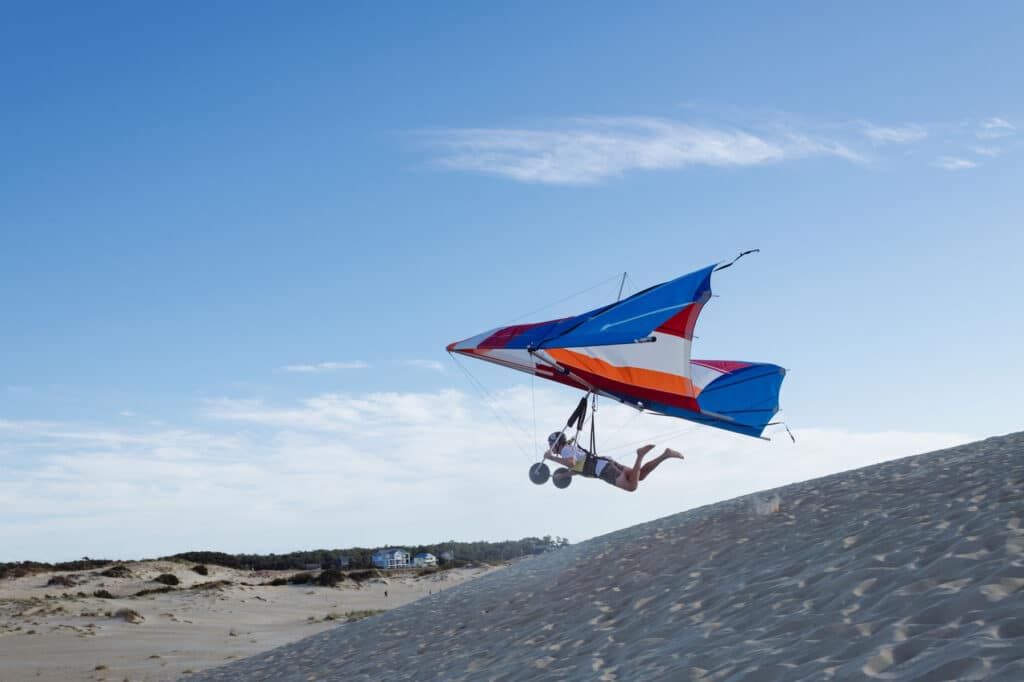
30. Hang Glide at Jockey’s Ridge State Park
Ever dream of flying? At Jockey’s Ridge State Park in the Outer Banks of North Carolina, you can do just that—no wings required. You’ll just need to hike to the tippy top of the tallest active dune on the East Coast, strap yourself to a flimsy piece of nylon, and let the gusty sea breeze do the rest. (Rest assured, skilled instructors will make sure you don’t wind up in the Atlantic.)
Cover photo: Pitch a tent at 6,277 feet on Roan Mountain. Photo courtesy of VisitNC.com
